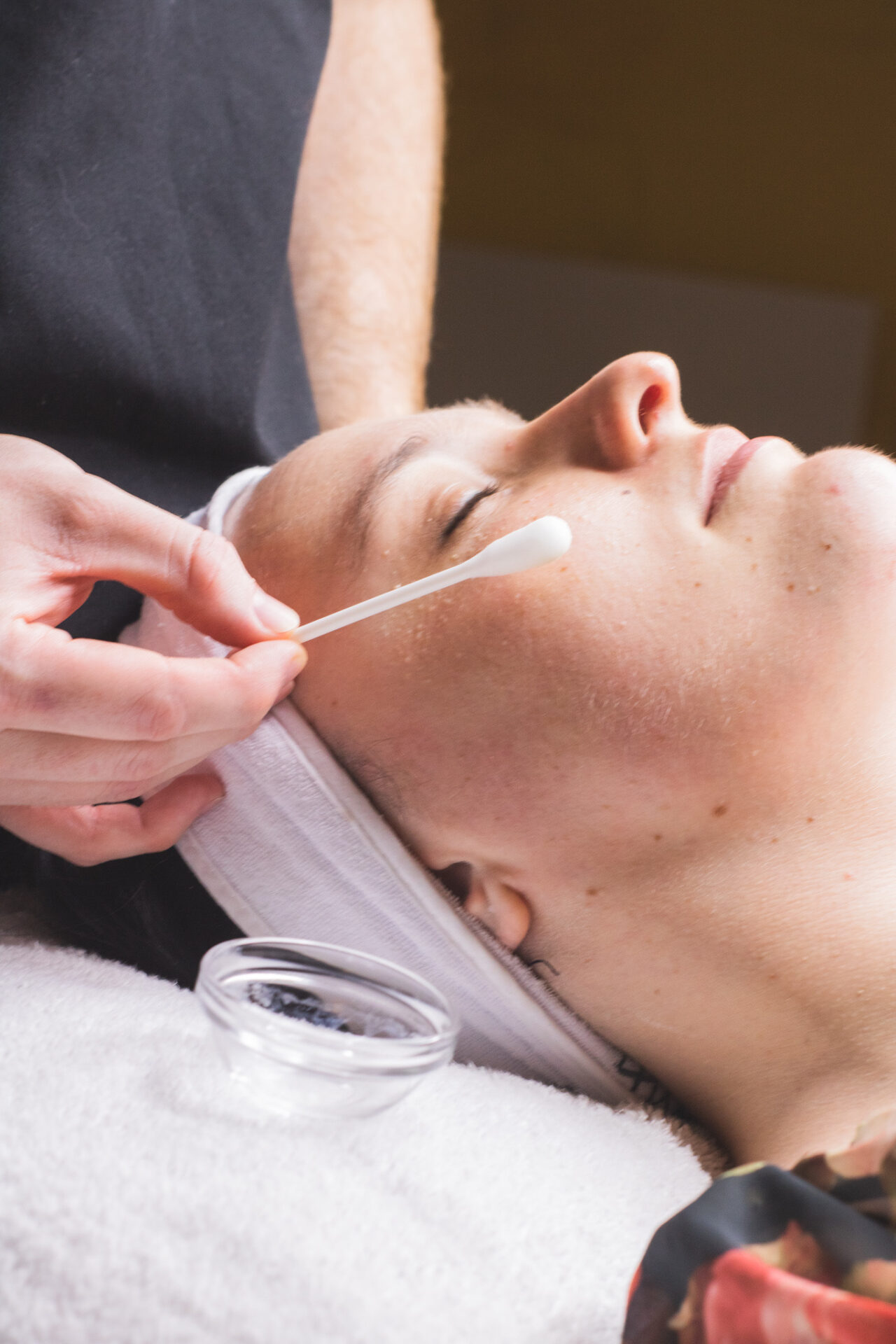Mandelic Acid
Mandelic acid is an 8-carbon alpha-hydroxy acid (AHA) derived from bitter almonds. It is particularly effective for individuals with sensitive skin, as it has a larger molecular size compared to other AHAs, making it less irritating and safe to use for reactive skin types as it doesn’t cause reactive hyperpigmentation.
Gentle Exfoliation:
Mandelic acid is an excellent exfoliant that works by breaking down the bonds between dead skin cells, allowing them to be easily removed. It is particularly effective in treating acne-prone skin, as it can penetrate the pores and unclog them, reducing the occurrence of blackheads and whiteheads. The gentle exfoliation also helps to reduce the appearance of fine lines and wrinkles, making the skin look smoother and more youthful.
Anti-Bacterial and Anti-Inflammatory Properties:
Perfect for acne manifestations. This acid is perfect for the acne sufferer whom is concerned with discolouration but can’t tolerate aggressive topical treatments. It can kill the bacteria that cause acne, reducing the severity and frequency of breakouts. It also helps to reduce inflammation and redness associated with acne, making it an excellent treatment for individuals with inflamed skin.
One of the reasons why mandelic acid is effective against acne bacteria is because of it’s molecular structure. Mandelic acid has a larger molecular size than other AHAs, such as glycolic acid or lactic acid. This larger size allows mandelic acid to penetrate the skin at a slower rate, which means that it can stay on the skin’s surface for a longer period of time. This prolonged exposure to the skin allows mandelic acid to effectively target and kill acne bacteria.
Sebostatic:
Another reason why mandelic acid is effective against acne bacteria is due to its sebostatic properties. In addition to inducing the sloughing of dead skin cells, it also prevents the buildup of oil and bacteria on the skin, which can lead to the formation of acne.
Hyperpigmentation and Melasma:
Mandelic acid has a brightening effect on the skin, as it helps to reduce the appearance of dark spots and hyperpigmentation. It works by inhibiting the production of melanin, the pigment responsible for skin colour, and promoting skin cell turnover, revealing brighter and more even-toned skin.
Mandelic acid is an alpha-hydroxy acid (AHA) derived from bitter almonds. It has unique properties that make it ideal for treating hyperpigmentation and melasma. One of its most notable features is its ability to penetrate deeply into the skin, allowing it to effectively target the pigmented cells responsible for hyperpigmentation and melasma. Its molecular weight is larger than other AHAs, making it less irritating to the skin, making it a better option for those with sensitive skin.
Mandelic acid is also a gentle exfoliant that helps to remove dead skin cells from the surface of the skin. By doing so, it can encourage cell turnover and promote the growth of new, healthy skin cells. This process can help to reduce the appearance of hyperpigmentation and melasma by evening out the skin tone and reducing the appearance of dark spots.
Another property of mandelic acid that makes it effective for treating hyperpigmentation and melasma is its ability to inhibit tyrosinase, an enzyme that plays a key role in the production of melanin. Melanin is responsible for giving skin its color, but an overproduction of melanin can result in hyperpigmentation and melasma. By inhibiting tyrosinase, mandelic acid can help to reduce the production of melanin, leading to a more even skin tone.
In summary, mandelic acid’s ability to penetrate deeply into the skin, its gentle exfoliating properties, and its ability to inhibit tyrosinase make it an effective treatment for hyperpigmentation and melasma. By promoting cell turnover and reducing the production of melanin, it can help to improve the appearance of dark spots and uneven skin tone. It is also a gentle option for those with sensitive skin.


Photo-Ageing:
Photo-ageing is a term used to describe the ageing of the skin due to exposure to UV radiation from the sun. This can lead to a number of skin concerns such as wrinkles, fine lines, and hyperpigmentation.
Mandelic acid can improve the overall texture of the skin, making it smoother and more supple. It helps to promote collagen production, a protein that is essential for skin elasticity and firmness. As we age, our natural production of collagen decreases, which is the main reason for the formation of wrinkles and fine lines. Mandelic acid stimulates the production of collagen, which can help to improve the elasticity and firmness of the skin and with regular use, can help to reduce the appearance of fine lines and wrinkles long term, drastically slowing the natural rate of photo-ageing.
This acid is also a gentle exfoliant that can promote sloughing helping to remove dead skin cells from the surface of the skin. This can improve the overall texture and tone of the skin, making it appear smoother and more youthful. Additionally, mandelic acid has antioxidant properties that can help to protect the skin from further damage caused by free radicals.
Another benefit of mandelic acid for photo-aged skin is its ability to reduce the appearance of hyperpigmentation. Mandelic acid can inhibit the production of melanin, the pigment responsible for skin color, and can help to fade dark spots and uneven skin tone caused by sun damage.
Conclusion:
Mandelic acid is an excellent ingredient for skin resurfacing. It is gentle, yet effective, with a large molecular weight, allowing for a controlled penetration of the corneum – perfect for individuals with inflammatory skin. This acid also benefits from antibacterial and anti-inflammatory properties, making it an excellent treatment for acne-prone skin. Pairing the benefits for inflammatory and acne-prone skin with it’s properties to promote collagen, makes it a versatile ingredient, perfect for a variety of common skincare concerns.


Start your Education:
Looking to start your journey with skin resurfacing?




